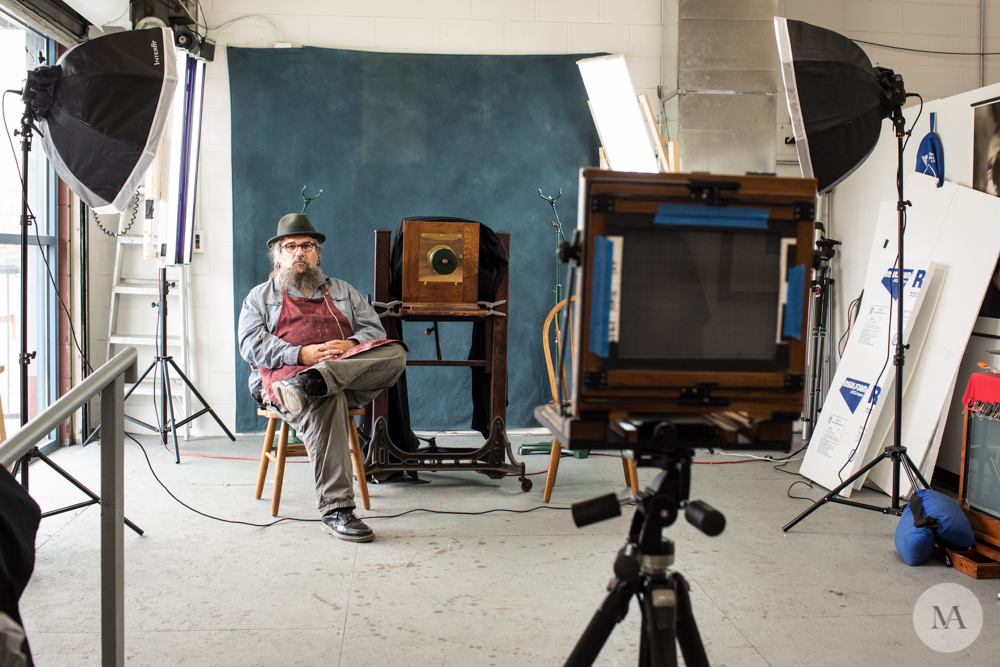Wet Collodion Workshop January 2014
 Tuesday, November 26, 2013 at 9:04
Tuesday, November 26, 2013 at 9:04 It's been several months since I've taught a wet collodion (positive) workshop. Over the past weekend (Jan 18-19), I had a great group of people come to Denver (or were in Denver) to learn the process.
We had Sophie (New York via Paris), Chris (San Fransisco), Tony (San Fransisco), Thom (Denver), and Steve (Denver). We had Matt Alberts assisting/teaching and Summer (my daughter) assisting/teaching. Jeanne (my wife) provided the food and drinks. We had a great time.
Not only did we learn about the wet plate collodion process, on Saturday, we had a very special guest visit. The owner and president of Chamonix Cameras, Hass came to Denver to visit us. What a treat. He brought me a wonderful gift, a very nice 10"x10" (25x25cm) custom wet plate holder. Hass showed everyone some of his work from Tibet. 24" x 32" (61x81cm) plates. They were absolutely beautiful! The people and landscape images were stunning - the elevation really added to the quality of light.
Here are a few iPhone photos that Jeanne shot during the workshop (thank you!)
 Quinn starts the workshop by going over parts of his book, Chemical Pictures.
Quinn starts the workshop by going over parts of his book, Chemical Pictures.  Whole plate Alumitype by Chris and Sophie
Whole plate Alumitype by Chris and Sophie Half plate Alumitype by Thom Harrop
Half plate Alumitype by Thom Harrop Talking about chemistry and how to handle and use the chemistry.
Talking about chemistry and how to handle and use the chemistry. Whole plate Ambrotype by Sophie
Whole plate Ambrotype by Sophie Thom Harrop gets ready to make a plate.
Thom Harrop gets ready to make a plate.  Admiring Chris' portrait in the fix.
Admiring Chris' portrait in the fix. More chemistry information. There's a lot to consume in a short amount of time.
More chemistry information. There's a lot to consume in a short amount of time.  Chamonix camera in the house! Hugo, Hass, and Quinn (left to right). Hass is the president and owner of the company. I made his portrait - Half Plate Ambrotype.
Chamonix camera in the house! Hugo, Hass, and Quinn (left to right). Hass is the president and owner of the company. I made his portrait - Half Plate Ambrotype. Anther beautiful portrait in the warm Denver sun - 72F (22C) by Sophie.
Anther beautiful portrait in the warm Denver sun - 72F (22C) by Sophie.
 Quinn Jacobson | Comments Off |
Quinn Jacobson | Comments Off | 





























